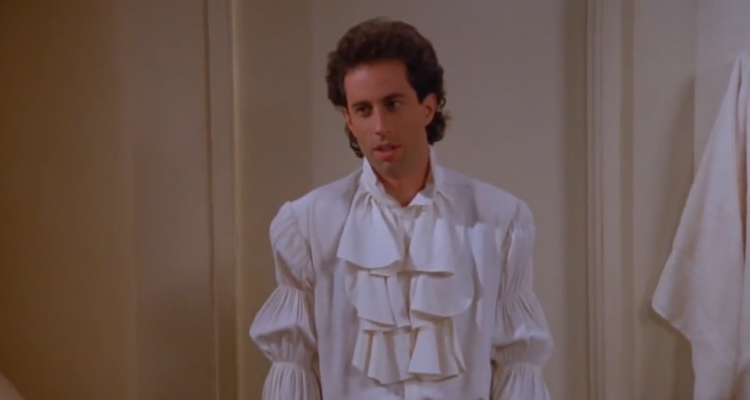As the titular character of his long-running and culturally influential sitcom, Jerry Seinfeld—with the help of co-creator Larry David and a marvelous supporting cast—mastered observational humor, and coined innumerable contributions to the lexicon of everyday life (e.g. “No soup for you!” and “Serenity now!”) Even after the show bowed out in 1998, Seinfeld still enjoys relevance and ratings in syndication. However, due to the perfectly plied witticisms and everyman musings of fictional comic Jerry Seinfeld, the actual Jerry Seinfeld makes more money from residuals while he’s sleeping for work he did 20 years ago than 99 percent of humanity will earn their entire working lives.
Though it’s a curse anyone would gleefully accept, the fame and financial success the identifiable “show about nothing” brought the eponymous comic is the same reason Seinfeld is currently unable to spin everyman observations with precision. With no real need to work, and a possible recognition that nothing he does will ever top Seinfeld, the 60-year-old star comic has become reclusive and rarely takes on projects (explaining his departure from the public eye with “I’m old, I’m rich, and I’m tired.”) Friday, Seinfeld graced Milwaukee (a city he’d pepper with jabs throughout the evening) with his presence for an 80-minute Riverside Theater show about, well, nothing.
With an audience trending older and more affluent than the crowd watching Lewis Black just across the river, Seinfeld eased into his Riverside set by assuming the pre-show monologue of the audience (“Are the other three gonna be there? If not, I’m not going!”), and opining on humankind’s ever-present quest to sit down, saying, “My goal is to distract you while you’re sitting in a different chair.” Goals clearly drawn, he slunk into a folksy bit about beds that transitioned into an examination of the term “death bed” and the burial versus cremation dilemma.
Each well-rehearsed and interconnected bit was fast and tight, not allowing many gaps for audience interaction. One woman tried to interject early on, and Seinfeld stifled her comment, “What’s that? Something about that show in the ’90s, right? Well, that’s over.” The rare set departure resulted in the biggest laugh of the night by the audience—who, oddly, was there to see the guy from the show in the ’90s. Though the material was far from hard-hitting, the relatively clean comic took a few dour departures: from the overarching generalization that everyone’s life sucks (“My life sucks too—well not as much, but still”) to the unexpectedly close proximity between “great” and “suck.” There wasn’t a single “What’s the deal with … ?” uttered in the entirety of the performance. Instead, the suit-donning multi-millionaire took a more authoritative approach than his sneaker-clad club comic TV persona of yore. He didn’t ask, he told.
Seinfeld told the packed theater things they already knew, only with humorous sidesteps to the modern conventions spliced in. He took down foodie culture, the advent of energy drinks, texting, and the dangers of cookies in a bag opposed to being in rows. He spoke wistfully about the day he discovered the Pop Tart. He energetically dismantled the U.S. Postal Service and reenacted the press conference where a weary Postmaster General announced stamp prices were on the rise again. In his trademark quivering shriek, he screamed “Just make it a buck! It’s gonna get there anyway!”
It was far from groundbreaking comedy, but by keeping it to the bare basics he managed to avoid alienating the crowd—with whom the headliner shares very little common ground at this point. But almost everybody has a phone, most everyone has bought a stamp or eaten a toaster pastry, and marriage has its difficulties no matter the couple’s tax bracket. Before he departed, Seinfeld appeased the consistently entertained audience by fielding some questions. Predictably, someone referenced his sitcom—specifically, “The Costanza Wallet”—and Seinfeld answered, “Let me explain this to you. There is nothing less funny to a comedian than his own material.” No matter if he was tired of it, the Riverside enjoyed almost every moment of soft, inoffensive, and relatable material Seinfeld offered up.
To end the show, Seinfeld treated Milwaukee to one morsel of Seinfeld insight, concluding the performance with a story about bumping into Wayne Knight in a New York deli. “Hello, Newman!” he deadpanned before saying goodbye.

